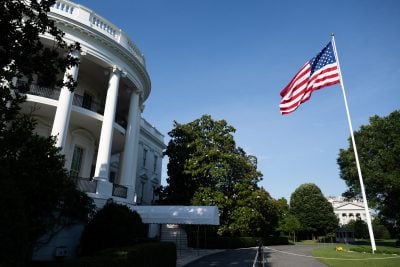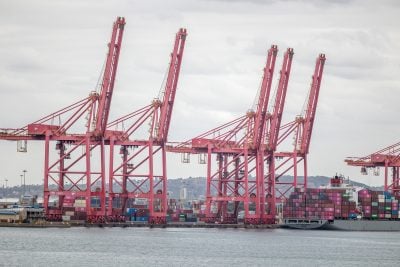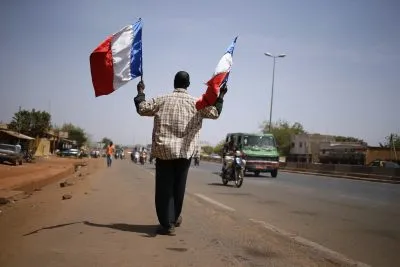With its placid waters, expansive lakeside villas and towering mountains, the plush resort of Yanqi Lake offers an unassuming location from which to launch China’s bid for international hegemony.
Against this bucolic backdrop, African leaders joined their global counterparts in May to listen to President Xi Jinping promote China’s most ambitious foreign policy project in decades.
For the assembled dignitaries, the long-awaited summit in support of One Belt, One Road (OBOR) – a global maritime and overland trading network first initiated in 2013 – did not disappoint. But while Xi’s latest promises of $78bn in financing – including $8.8bn for developing countries who join – will have pleased Africa’s delegates, the extent of the continent’s geographic and financial participation in the scheme remains ambiguous.
“Right now I think the physical links and Africa’s relationship to the Belt and Road are still not developed,” says Yu-Shan Wu, a foreign policy researcher at the South African Institute of International Affairs.
“Is the initiative simply connecting existing projects or creating new projects to link China to the world? It’s doing a bit of both, and showing that China is more serious about putting its money where its mouth is when it says it wants to support globalisation.”
Ambitious vision
The scope of that vision is certainly ambitious. Conceived as an attempt to recreate the historic trading routes linking China to the world, the scheme has been recast around an overland “Belt” tracking the ancient caravan lanes of Europe and Central Asia, and an Indian Ocean maritime “Road” stretching as far as the East African coast.
Underpinning the ambitious bid to pull over 60 disparate nations into an integrated trading system is a plan to unlock vast flows of infrastructure capital, which Credit Suisse believes could amount to $502bn over five years. And while maps may show Africa on the periphery of the scheme – most projects are clustered on the East African seaboard in Kenya, Djibouti and Egypt – promises of infrastructure billions and links to new markets are likely to extend beyond the official pronouncements.
“I see the Belt and Road as more of a general programme than a specific project – at this point in its development China has excess savings so it’s becoming a major investor around the world… the Belt & Road is an opportunity for China to finance infrastructure. They’re willing to finance it anywhere in the world but it’s mostly developing countries on the demand side… If Nigeria is interested I don’t think China will really care if it’s not along the Belt and Road,” says David Dollar, senior fellow in the John L. Thornton China Center at the Brookings Institution and a former US Treasury economic and financial emissary to China.
Pledges of Chinese investment from the scheme are already being tallied up across the continent. According to frontier and emerging markets investment firm Exotix Partners, some 8% of Tanzania’s GDP in 2015 came from aggregate Chinese inflows, with over 3% accounted for by OBOR pledges. In Kenya and Egypt, OBOR pledges significantly outweighed other support from China, including foreign direct investment.
While Chinese firms already account for around 50% of Africa’s international engineering, construction and procurement market, policymakers are keen for infrastructure spending to top the $21bn committed by China in 2015.
“I think if you’re talking about [African] policymakers they are reaching out because the practical side is that you will see funding available to build transport infrastructure – that’s the most important aspect for Africa’s industrialisation and part of encouraging intra-regional trade,” says Wu.
In April, the Chinese Ministry of Transport revealed that it had signed over 130 bilateral and regional transport agreements with countries along the Belt and Road. Although the project had already been initiated before OBOR, policymakers are talking up the Chinese-funded Nairobi–Mombasa railway as a model for future cooperation under the scheme.
African politicians hope that transformative investment in roads, ports and railways will help to slash some of the slowest cross-border transit times in the world while encouraging new links to markets in Southeast Asia, Europe and China itself.
The ultimate goal is to create manufacturing-based industries which can attempt to turn back the tide on decades of commodity-dependent growth. But while Africa may intend to narrow a yawning trade deficit with China, analysts believe that China’s goals could be quite different.
“OBOR aims to build commodity import and manufactured goods export supply chain infrastructure connecting China to markets in Asia, Middle East, Africa and Europe,” says Hasnain Malik, head of equities research at Exotix Partners. “OBOR could create sustainable demand for Chinese goods which would help underpin its economic growth and FX rate in the long term. OBOR is driven by exports as much as imports, unlike, for example the Forum on China-Africa Cooperation, which is more narrowly motivated by resource extraction.”
That could raise fears of a glut of cheap Chinese exports heading to the continent and undermining local manufacturing capacity. As with Africa’s existing entanglements with China, analysts are cautioning policymakers to be wary of apparent Chinese generosity.
“The question for the future after China builds all this capacity is whether China is going to open up and absorb a lot of imports in the way the US did in the past. I’m not sure,” says Dollar.
Be careful of the price
Vast pledges of financial support for OBOR projects also bring danger. McKinsey estimates that debt issuance by Chinese institutions accounted for approximately a third of sub-Saharan African debt in 2015, with the vast majority linked to infrastructure projects like the Nairobi–Mombasa railway. Dollar says that Africa must limit its infrastructure debt if it is to avoid another era of dependence on foreign partners.
Yet while concern remains that OBOR is just the latest Chinese attempt to pitch for global political influence, Wu says that the scheme appears to have been forged in a new spirit of multilateralism, pointing to pledges in a 2015 white paper offering respect of United Nations principles and global norms.
“They recognise that it won’t work unless they have global public and partner support because while they’re putting so much finance into the initiative, it cannot work on its own. It requires private sectors and other countries getting involved and buying in.”
Rather than signing up to any pledge offered under the scheme, Africa’s policymakers must closely judge the wisdom of their cooperation before deciding whether the potential trade and transport links are worth the price, she adds. “When others create policies and initiatives you need to take the opportunity for input and say when there are lines that you are not going to cross.”
David Thomas
Want to continue reading? Subscribe today.
You've read all your free articles for this month! Subscribe now to enjoy full access to our content.
Digital Monthly
£8.00 / month
Receive full unlimited access to our articles, opinions, podcasts and more.
Digital Yearly
£70.00 / year
Our best value offer - save £26 and gain access to all of our digital content for an entire year!
 Sign in with Google
Sign in with Google 


